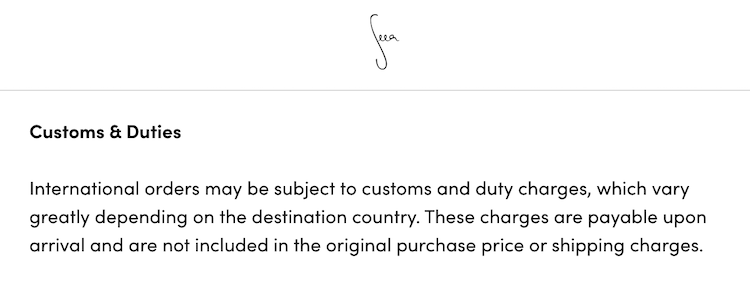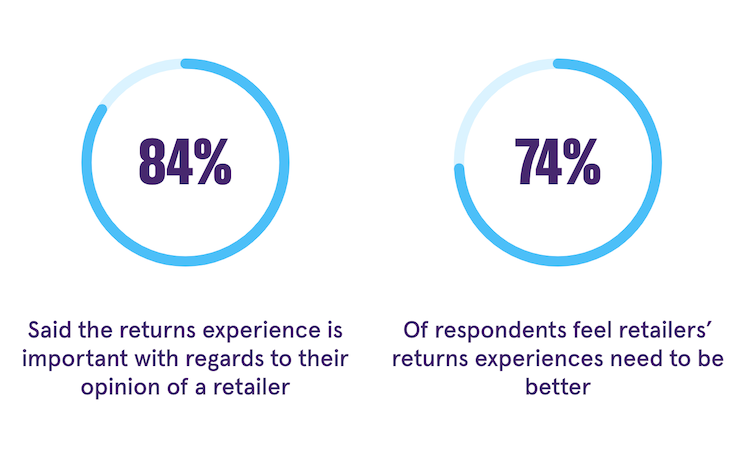Shipping is an essential component of every product-based ecommerce business. And it’s more than just logistical. It’s a core part of the customer experience.
Unfortunately, shipping can also be challenging. You’re at the mercy of third-party carriers and external factors like weather, theft, and unplanned global events. And when order fulfillment suffers, so do customers—and so does your bottom line.
To keep your business moving and orders shipping, we’ve put together a list of shipping resources to help you fulfill orders and communicate with customers.
1. Pack your orders like a pro
Shipping orders starts with packaging products and prepping them for their journey. Packaging should be cost-effective, customer-friendly, and functional.
Packaging materials
Packaging materials do more than just keep your products safe during transit to their destination. The unboxing experience is your chance to make a first impression on customers with their order. It also provides a shareable experience customers may want to post on social media.
There are many options when it comes to ecommerce packaging materials for your orders.
You might consider finding sustainable packaging and shipping options to reduce your environmental impact and boost brand image and consumer perception. Rothy’s shoe brand, for example, has a commitment to sustainability, and uses recycled, biodegradable packaging and boxes that reflect that.

Rothy’s biodegradable shoeboxes are durable enough to ship on their own.
Many carriers offer free packaging for use with a specific shipping rate. Although you don’t have to pay for the materials, you might need to create a free account with the carrier for them to send it to you.
The following Shopify Shipping carriers offer free packaging:
Check out these other small-business shipping resources for packaging materials:
- Packaging Inserts Ideas: 7 Ways to Increase Customer Loyalty
- Why Product Packaging Design Is an Investment, Not an Expense
Shipping rates at checkout
Now more than ever, customers are expecting fast fulfillment and affordable delivery options. In fact, one report from McKinsey found that more than 90% of US consumers expect two- to three-day delivery options and 30% expect same-day delivery.
While you can’t always control shipping speeds, you can adjust shipping rates. Consider pricing options like free, flat-rate, and expedited shipping. If you choose to offer free shipping, you can include the fee in your product prices, or you can absorb the shipping costs. If you choose to offer flat-rate shipping, customers will pay one consistent rate depending on where they are located.
You can also offer customers the option to choose their carrier, and set up your store to offer carrier-based shipping rates at checkout. You can also combine shipping rates from different shipping profiles for the most cost-effective solution.
Save time buying shipping labels
Avoid unnecessary trips to the post office by purchasing discounted shipping labels directly from Shopify. To purchase a shipping label, select “Create shipping label” from an order page and select the carrier you want to ship with. Once purchased, print your shipping label and attach it to your package.
You can then schedule a pickup with your carrier. Packages can be left in a designated location to ensure a six-foot distance between you and your courier.
Adding weights for your products and packages will ensure you get accurate label prices on Shopify Shipping and save time when purchasing a label.
2. Get your orders delivered right
There are many different types of shipping and delivery methods available. Now, brands can send products to customers via traditional delivery methods, like through the mail and shipping services, or they can use more innovative options like local delivery or in-store pickup.
Local delivery
Consider offering local delivery for customers who are located nearby. Local delivery skyrocketed in popularity among businesses and consumers alike during the height of the COVID-19 pandemic. And it seems this shipping trend is here to stay. The number of couriers and local delivery service providers continues to grow each year.
You might hire dedicated staff to deliver these orders or leverage a third-party service or platform to pick up the items and drop them off at customers’ delivery addresses.
Local delivery is also an excellent fulfillment method for brick-and-mortar retailers. It can help boost sales, especially if you have large or otherwise difficult to transport items.
Check out these other resources to help you implement local delivery for your Shopify store:
Taxes
When selling across state and even country lines, it’s important to stay apprised of the different tax obligations. You or your customers may owe taxes to the state in which you’re operating as well as the state in which the customer resides or where the order is delivered. Each state has its own sales tax guidelines, and you may have to pay international duties for orders sent overseas.
With Shopify, you can set up location-based tax settings to automate the process for you. You can also refer to this US sales tax state guide to learn more about your and your customers’ obligations.
International shipping
If you want to tap into the global economy, selling internationally is an excellent way to do so. This will allow you to grow your business to other countries and customers. However, it also comes with logistical challenges, including shipping. Shipping internationally is different from domestic fulfillment.
You’ll need to use different carriers—often a combination of carriers—and account for longer shipping times and higher costs. You may also have to adjust your taxes settings. International shipments are often subject to additional customs fees, taxes, or duties. Sustainable swimwear brand Seea, for example, requires customers pay these additional taxes upon the package’s arrival.

Here are some more resources to help you navigate international shipping for your Shopify site:
Returns management
Ecommerce returns management is a challenging but a necessary part of every online business. While it’s important to have a strong return policy to protect your profits, you don’t want to be so rigid that customers have a negative experience or, worse, people don’t want to buy your products in the first place.
Nearly three-quarters of consumers believe the returns process needs to be improved. As many as 84% say this is an important and influential part of the customer experience—one that has a lasting impact on their opinion of the retailer. And 95% say a bad return experience will make them less likely to return to a brand for future purchases.

It’s important to set up your shipping strategy to handle returns. Reverse logistics should be as smooth as possible—it’s your last chance to turn a disappointing experience into a positive one. You can buy Shopify Shipping return labels to make it easy for customers to pack up and ship unwanted items.
3. Optimize your ecommerce shipping processes
You likely already have some shipping processes in place. Sometimes you can tweak what you already have instead of overhauling it completely.
Communicate shipping delays
Whenever there’s a shipping delay, it’s important to proactively communicate it. This means not only notifying customers directly but also getting in touch with your supply chain, operations, and logistics team, and whoever else may know about or be impacted by the delay.
Stay in touch with your customers to communicate shipping delays and encourage engagement through updates and promotional offers.
Send an email to your subscribers and/or create an announcement bar to share shipping updates with customers on your site. Don’t forget to update your shipping policy to reflect any changes as well.
Offer free shipping for large orders
Free shipping isn’t just an added bonus these days. Many consumers consider it the norm. According to a 2021 Jungle Scout consumer trends report, 80% of consumers expect free shipping when their order hits a certain threshold, and 66% expect free shipping for all online orders. And high shipping fees are often cited as a top reason for abandoning shopping carts.
While you may not be able to offer free shipping for all orders, you can consider creating an order minimum. Customers who make a purchase above the order minimum will get free shipping. This is a strategic way to boost average order value (AOV) and conversion rates. You can also offer free shipping discounts and coupon codes as an incentive to sign up for your email list.
Cut shipping costs
While shipping is a necessary business expense, there are many solutions to save money and stay competitive as a small shop. The cheapest way to ship a package depends largely on your location, the destination, the timeline, and the package itself—size, weight, etc. For starters, tap into the affordable shipping resources mentioned above, specifically regarding free packaging materials and discounted labels.
The best way to save money on shipping is to be flexible. For some packages, flat rate shipping may be the most affordable option. But in others, you might look to use two-day air as a more cost-effective solution.
You can also leverage the benefits of Shopify Shipping. Shopify Shipping makes it faster and easier to fulfill orders. You can buy shipping labels in Shopify, print multiple labels at a time, and get orders out the door quickly. Merchants can save up to 88% on shipping costs in the US and send products around the world with confidence.
Moving forward with shipping resources for your online store
While shipping can be a messy area of your business, it’s absolutely critical to invest in setting up processes that work for both your team and your customers. Shipping is a necessary evil, and this round-up of shipping resources will help you iron out any kinks and set yourself up for success.
Read more
- How to Sell Pre-Orders on Shopify
- HTS Codes- International Commerce and Imports
- Manage, Monitor, and Move Your Inventory With the Shopify app
- How to Increase Sales and Offer a Better Customer Experience with Flat-Rate Shipping
- Understanding PSD2 and Strong Customer Authentication
- The Fulfillment Stress That Comes with Unprecedented Press
- What To Do When Customers Force Refunds and Chargebacks
- Getting Your Back Office Ready for the Holiday Selling Season
- 12 Checkout Process Optimization Tips to Increase Ecommerce Revenue
- How Does Credit Card Processing Work?
Shipping resources FAQ
What’s the difference between shipping and fulfillment?
Shipping refers to the actual transport of packages, while fulfillment is an umbrella term for the whole process of communicating an order to the warehouse and getting it to the customer’s destination.
Which shipping platform is best for ecommerce?
Shopify Shipping is the best shipping platform for ecommerce. Merchants can save up to 88% on shipping costs. You can buy shipping labels in Shopify, print multiple labels at a time, and get orders out the door quickly.
How can I get cheaper shipping for my ecommerce store?
You can get cheaper shipping for your ecommerce store by using Shopify Shipping. Shopify Shipping saves merchants up to 88% on shipping costs.
Does Shopify handle shipping for me?
Yes. Shopify Shipping works directly with multiple carriers, each offering multiple mail classes to make the process as streamlined as possible, so you can get orders into your customer's hands quickly and affordably, whatever that means for your business.





